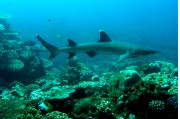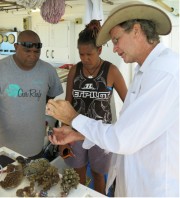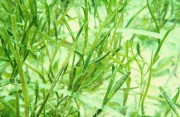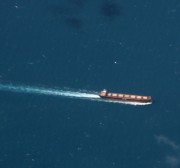Kate Osborne
Author of

On the Great Barrier Reef sharks are readily identified as fearsome predators. In ecological theory, species that are at the top of the food chain are commonly described as apex predators. However generalising all sharks as apex predators is misleading and may lead to poor outcomes in the context of managing coral reefs and sharks for conservation.

During trips to Torres Strait in collaboration with TSRA in 2013 and 2014 coral skeletons were collected under a permit issued by the Commonwealth of Australia under the Torres Strait Fisheries Act 1998. The permit specified the collection of small pieces of the coral skeleton for identification purposes.



Middle Reef has been exposed to frequent disturbances since surveys began in 1993. Coral cover and coral diversity has been remarkably resilient to high temperatures, freshwater and high sediment loads. Middle Reef is more resilient to bleaching than other reefs around Magnetic Island and the corals are adapted to warm average temperatures. Sediments have high levels of organic carbon and nitrogen. Wave damage from cyclones is a minor threat. However rainfall associated with cyclones or summer low pressure systems can result in exposure to low salinities and long periods of turbidity. Recent outbreaks of atrematous necrosis on Magnetic Island suggest coral disease could be a new risk to Middle Reef. Assessments of the status of Middle Reef in 2010 were postitive (Thompson et al, 2010), based on observed levels of community attributes against estimates of expected change derived from a coral growth model (Thompson and Dolman 2010).
Pages
- « first
- ‹ previous
- 1
- 2
- 3





